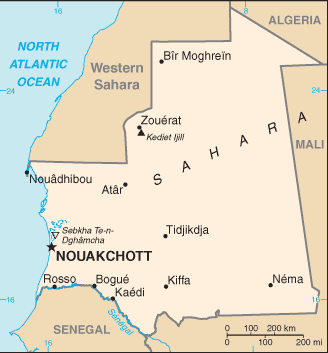NewsDesk @bactiman63
The Director General of Public Health of Mauritania, Dr. Mohamed Mahmoud Ould Eel Mahmoud reported that on February 13, 2022, the Ministry of Health was notified of two cases of Crimean-Congo hemorrhagic fever (CCHF) in recent days from a pastoral region in one of Mauritania’s interior governorates.

Ould Eel Mahmoud warned that this disease is endemic in West Africa and that one or two cases are detected annually in Mauritania, generally in people whose work forces them to be in contact with animals.
The Ministry of Health issued instructions for health centers to be vigilant and monitor the health situation, and alerted citizens to take care measures.
The measures taken are in line with the ministry’s strategy of informing citizens about all events related to public health. Ould Eel Mahmoud added that joint missions from the Ministry of Health and the
Ministry of Animal Development to monitor the situation, isolate suspected animals, look for other possible cases and take necessary measures in a timely manner.
Subscribe to Outbreak News TV on YouTube
Crimean-Congo hemorrhagic fever is a widespread disease caused by a tick-borne virus (Nairovirus) of the Bunyaviridae family. The CCHF virus causes severe viral hemorrhagic fever outbreaks, with a case fatality rate of 10–40%.
Animals become infected by the bite of infected ticks and the virus remains in their bloodstream for about one week after infection, allowing the tick-animal-tick cycle to continue when another tick bites. Although a number of tick genera are capable of becoming infected with CCHF virus, ticks of the genus Hyalomma are the principal vector.
The CCHF virus is transmitted to people either by tick bites or through contact with infected animal blood or tissues during and immediately after slaughter. The majority of cases have occurred in people involved in the livestock industry, such as agricultural workers, slaughterhouse workers and veterinarians. Human-to-human transmission is possible.


One thought on “Mauritania reports two human Crimean-Congo hemorrhagic fever cases”